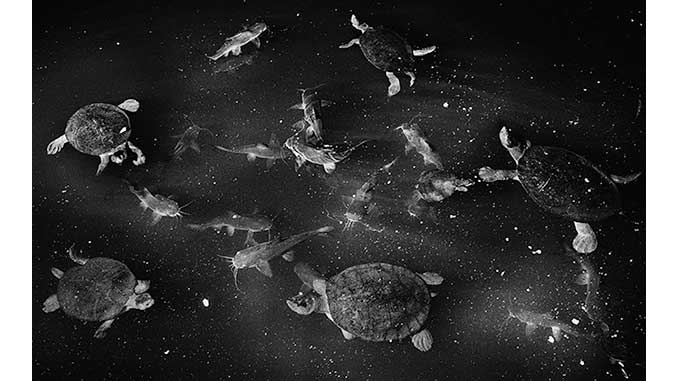 Nothing’s more familiar and out of grasp than stars. The Museum of Australian Photography (MAPh) has taken this everyday stuff, the infinite matter, the sparkle of dreams, as the subject of their latest exhibition. Stargazing, with its poetically resonant curation, goes above the horizon and loses us in another celestial realm.
Nothing’s more familiar and out of grasp than stars. The Museum of Australian Photography (MAPh) has taken this everyday stuff, the infinite matter, the sparkle of dreams, as the subject of their latest exhibition. Stargazing, with its poetically resonant curation, goes above the horizon and loses us in another celestial realm.
Curator Stella Loftus-Hills places high value on photography’s documentation of the skies, positing that it’s a scientific tool aided by artistic technique and our imaginations.
“Encouraging us to reflect on the universe and our place within it, this exhibition considers the cosmos from an imaginative yet earthly perspective,” Loftus-Hills shares, saying that the exhibition’s “lofty allusions” connect to “humanity and the planet.”
Statements like this from the exhibition are humble. It’s an unassuming rationale for a show that overstates it. But only to one’s delight. Heading to a museum and feeling more struck than expected? Yes, thank you.
Across forty photographic works (many from MAPh’s collection), 13 contemporary artists (most mature or established) have honed their crafts toward a mystique that canvasses the show with an ethereal vibe. The artworks’ colours – primarily black, white and silver – shine under subtle spotlights against their places on black-painted walls.
It’s not often a lack of colour evokes tingly feelings under the skin, rather than nostalgia and the old, like this. Eerie music also playing overhead is an extra touch, manufacturing a total spatial immersion in the cosmos. It’s almost cinematic.
Pieces oscillate between experimental techniques, analogue technologies and archival imagery with equal attention to medium, process and result. Artists manipulate photography to capture the metaphysical heavens, like Harry Nankin’s cameraless process using the mirror-like dryness of Lake Tyrrell to expose films to starlight (amongst other steps).
Sometimes, the focus is more on the purity of looking at the final work. In Zan Wimberley’s I dreamt about climbing into the night sky (2016), black-and-white photographs of exploding fireworks capture light travelling across a black sky in an ephemeral act of emotional radiance.
MAPh creates no illusions but an awareness (through wall text and the like) that artists work within constraints. They need to get creative to capture the stars. There’s only so much they can achieve with a camera. But, their works, especially up against each other, speak less of limits than of opening the universe.
At once, there’s sensation and science. Reality and spirituality coexist. There’s a whiff of a high art vibe but equally room for childlike wonder. Like you’re in an observatory but in a dream.
Really, Stargazing unleashes a deep-seated urge to stare at the stars. With its artists navigating galaxies, MAPh creates an astrological scene, a micro-universe, for us to indulge in a new relationship with space but also revisit our childhood obsession with the solar system long abandoned. It’s a mature rumination to look up and keep our eyes fixed up there.
Stargazing
Museum of Australian Photography (MAPh), 860 Ferntree Gully Road, Wheelers Hill
Exhibition continues to 18 February 2024
Free entry
For more information, visit: www.maph.org.au for details.
Image: Trent Parke, Catfish and turtles, Roper River, Northern Territory, 2011, from the series The black rose, pigment ink-jet print, 98.0 x 147.0 cm. Museum of Australian Photography, City of Monash Collection, acquired 2015 – courtesy of the artist, Hugo Michell Gallery (Adelaide) and Michael Reid (Sydney)
Review: Tahney Fosdike
